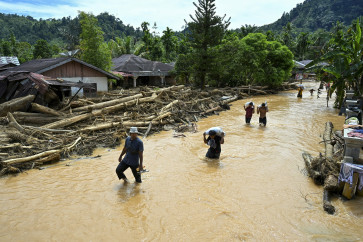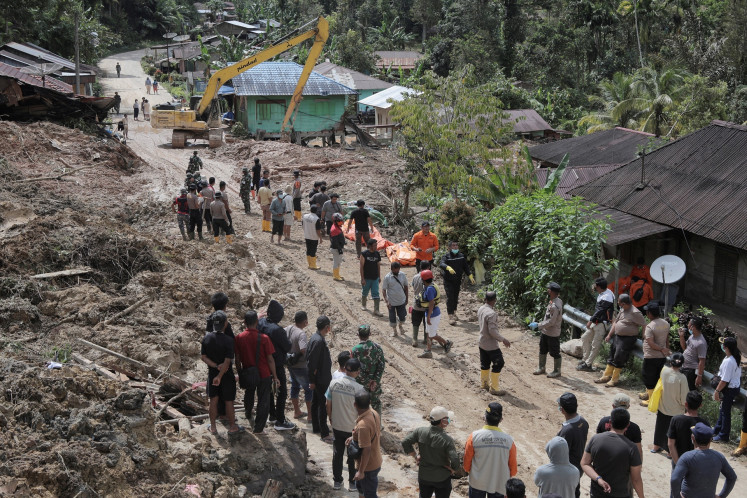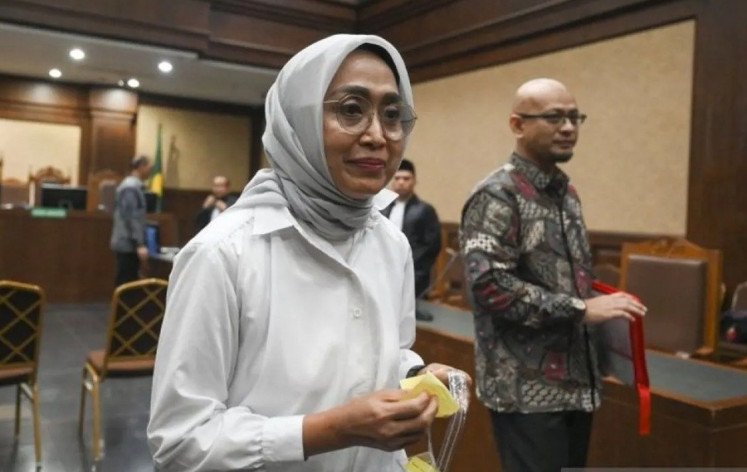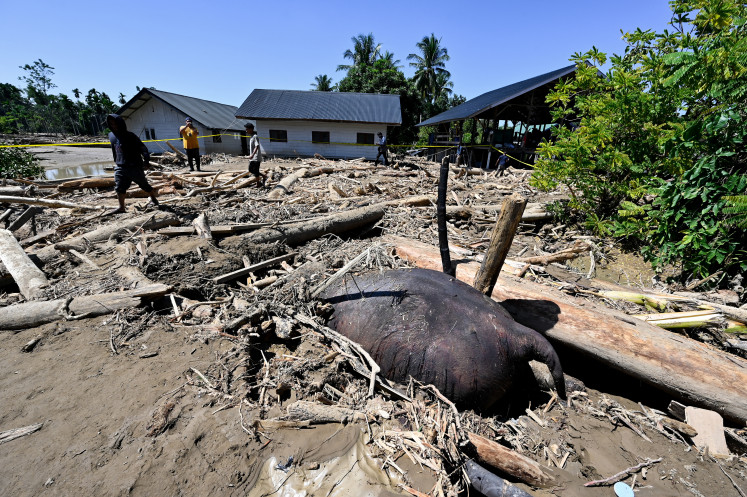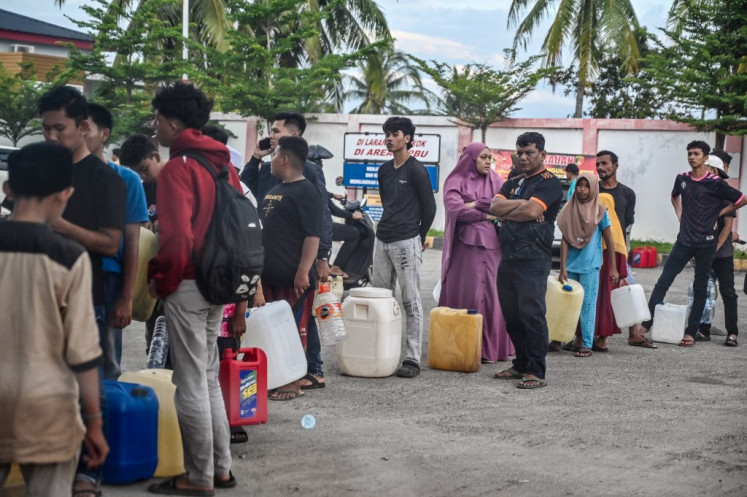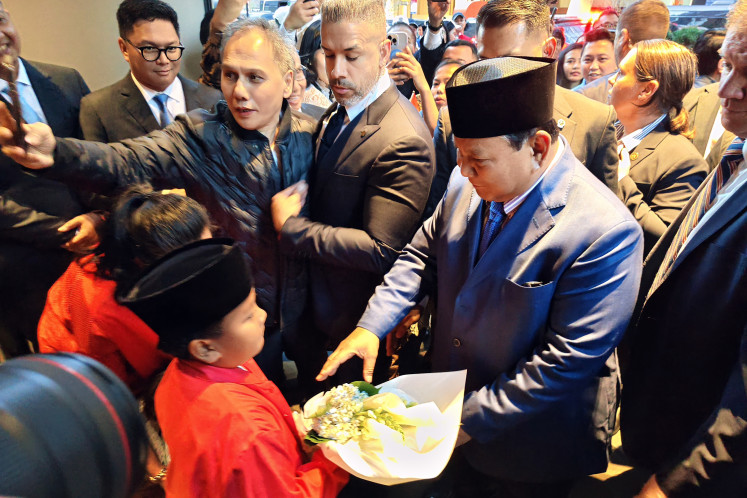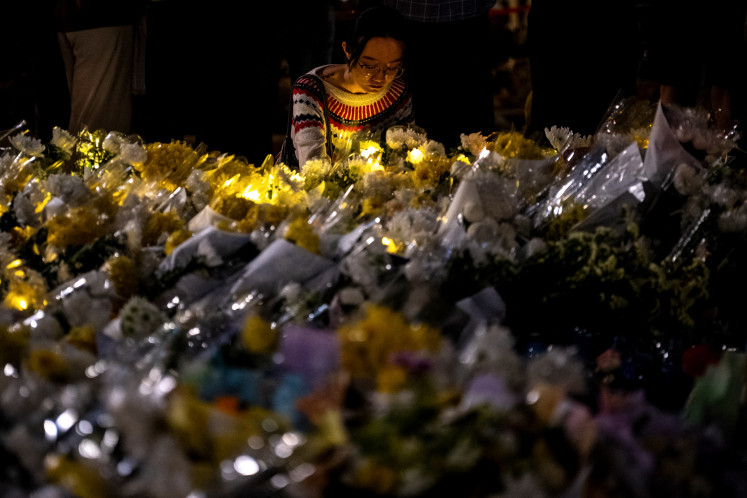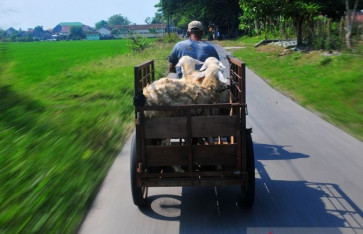Popular Reads
Top Results
Can't find what you're looking for?
View all search resultsPopular Reads
Top Results
Can't find what you're looking for?
View all search resultsThe economics of ‘qurban’ and efforts to address the income gap
The income disparity is evident in the consumption of essential but expensive food items such as meat, which is unaffordable for the lower-income population.
Change text size
Gift Premium Articles
to Anyone
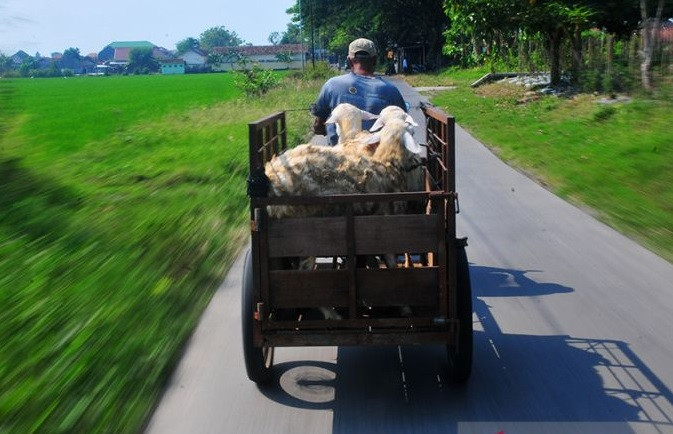 The transporter: A courier takes sacrificial goats using his motorized cart from a local animal market to their buyer in Kirig village in Kudus regency, Central Java on June 23, 2023. The delivery service costs between Rp 20,000 (US$1.33) and Rp 200,000, depending on the distance and number of cattle. (Antara/Yusuf Nugroho)
The transporter: A courier takes sacrificial goats using his motorized cart from a local animal market to their buyer in Kirig village in Kudus regency, Central Java on June 23, 2023. The delivery service costs between Rp 20,000 (US$1.33) and Rp 200,000, depending on the distance and number of cattle. (Antara/Yusuf Nugroho)
F
or Indonesian Muslims, qurban (sacrifice), which will be performed this week, is not just a religious ritual but also a significant social-economic tradition. Being the world’s largest majority Muslim nation, Indonesia has substantial potential in the qurban sector. Properly managed, it can boost economic growth, improve the welfare of the less fortunate and empower small-scale livestock farmers.
The Institute for Demographic and Poverty Studies (IDEAS) projects that Indonesia's qurban economic potential for 2023 is estimated at Rp 24.5 trillion (US$1.6 billion), involving 2.08 million shahibul qurban (those performing the qurban ritual). Although slightly lower than the previous year's estimate of Rp 24.3 trillion from 2.17 million shahibul qurban, this projection considers the lingering effects of the global recession.
Out of the 2.08 million high-income Muslim families, the highest demand for sacrificial animals is for goats and sheep (1.23 million) and cattle and buffalo (approximately 505,000). These animals, with varying weight ranges, have the potential to produce around 103,000 tonnes of meat.
Java Island, particularly urban areas like Greater Jakarta, Greater Bandung, Greater Surabaya, Yogyakarta, Malang and Semarang, presents the largest qurban potential due to its concentration of middle-class Muslims with strong purchasing power.
Indonesia has long experienced a wide food consumption gap rooted in income inequality. This disparity is evident in the consumption of essential but expensive food items such as meat, which is unaffordable for the lower-income population. In 2022, the highest percentile (1 percent of the wealthiest) consumed an average of 5.31 kilograms of goat and beef per capita per year, 294 times higher than the lowest percentile (1 percent of the poorest) consuming only 0.02 kg of meat per capita per year.
In this context, qurban plays a crucial role for the impoverished. It has the potential to improve their access to expensive essential food items. More equitable access will reduce the level of meat consumption inequality.
In 2022, we identified at least 74.2 million mustahik (those eligible to receive qurban meat) who belong to the group with the lowest meat consumption and are thus most deserving of qurban meat. The prioritized mustahik include 5.2 million extremely poor individuals (below 0.8 poverty line/PL), 11.4 million poor mustahik (0.8 - 1.0 PL), 16.5 million near-poor mustahik (1.0 to 1.2 PL) and 41.1 million vulnerable poor mustahik (1.2 to 1.6 PL).




